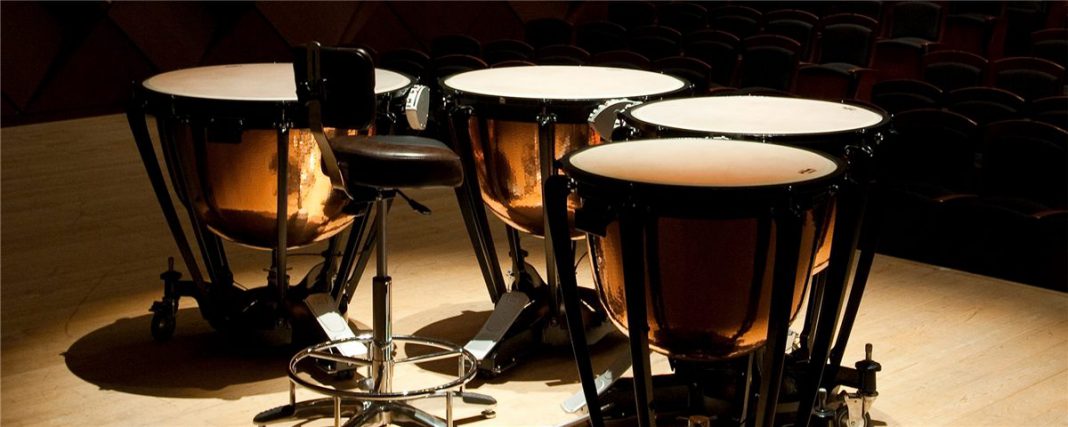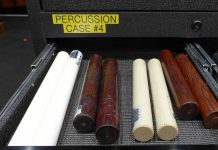TIMPANI
- Tempered Tuning – timpani in tune with itself: same pitch at each tuning rod
- Drum sizes and pitch ranges:
32” (30”) D-A, 29” (28”) F-C, 26” (25”) Bb-F, 23” D-A, 20” F-C
Ear Training
- Match pitches with voice (during the initial stages of learning to tune, percussionists may feel unsure about singing.
- Encourage the entire ensemble to sing the desired pitch along with the percussionist. This can help the percussionist and raise the level of awareness of other musicians.)
- Learn intervals – match given pitch , then sing desired interval
- Experiment with familiar melodies:
- P5 – Twinkle Twinkle
- P4 – Here Comes the Bride
- M3 – Michael Row
- m3 – Brahms’ Lullaby
- M2 – Happy Birthday
- m2 – Jaws
- Solfege syllables – more advanced, sing patterns (arpeggio’s, etc…)
Tuning Procedure
- Pitch references for initial tuning
- Pitch pipe, keyboard percussion, tuning fork, another instrument, etc…
-
- Obtain lowest pitch on drum
- Listen to the pitch
- Sing, internalize the pitch*** (extremely important)
- Tap the drum once – then quickly move the pedal up to the desired pitch
- Stop on the desired pitch – if you over shoot the desired pitch return to step one. Do not try to adjust the pitch downward.
Additional thoughts:
- Timpani sound best in the middle of their range (try to avoid lowest note when possible).
- Tuning gauges – can be a crutch, must be accurately set and maintained
Sitting on a stool can free the feet for pedaling (also benefits short & tall players).
Changing pitch during piece – mark changes in music
- Find pitch in the ensemble if possible, if not, “tune out” the ensemble
- Good handle of intervals
- Be discrete – hum quietly and vibrate the head quietly
- Keep good time while making the change
- Best sound – start at edge, slowly striking the drum and moving toward middle, you will find the most resonant sound (2” – 3” from edge)
Grip – German and French = direct affect on tone
Mallet choices – staccato, general, cartwheels (different articulations, weight, tone)
Rolls – SINGLE STROKE, roll speed determined by pitch. Lower pitch=slower head vibration, Higher pitch=faster head vibration (faster decay)
- Volume achieved with stick height
Sticking/ Muffling – try to alternate, if need be – double or cross-over
- Muffling – press fingertips (soft dynamics) and base of hand (louder dynamics) on the head. Don’t swipe – makes extraneous sound.






